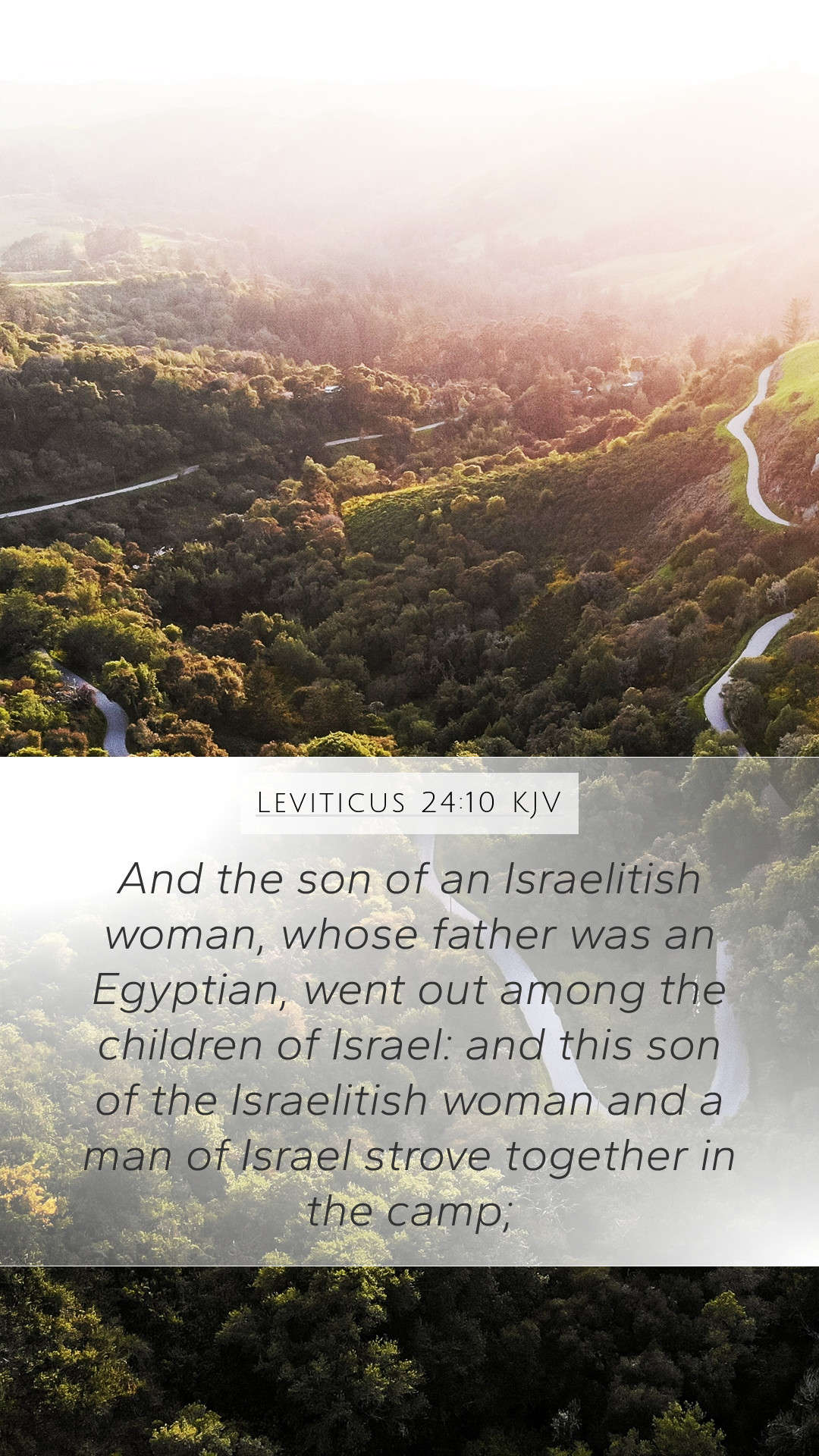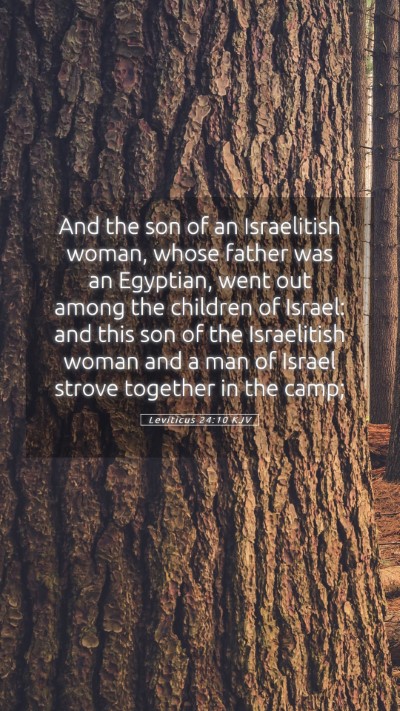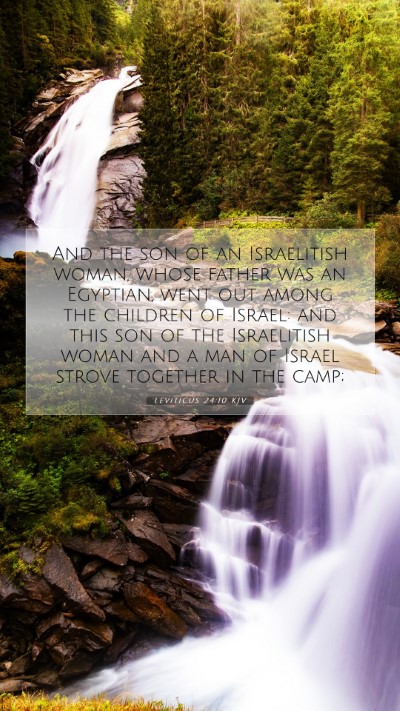Bible Verse Meaning and Commentary for Leviticus 24:10
Leviticus 24:10 reads: "And the son of an Israelitish woman, whose father was an Egyptian, went out among the children of Israel: and this son of the Israelitish woman and a man of Israel strove together in the camp;"
Overview of Leviticus 24:10
This verse introduces a significant moment in Israelite society, where a mixed heritage individual becomes embroiled in conflict, reflecting broader themes of identity and the consequences of actions. To fully grasp the meaning of this verse, we can look into various commentaries that help us understand its context and implications.
Insights from Commentary
-
Matthew Henry:
Henry emphasizes the importance of recognizing the heritage and background of individuals within the Israelite community. He notes that the conflict arises not merely as an isolated event but as reflective of broader societal dynamics, addressing themes of race and belonging among the Israelites.
-
Albert Barnes:
Barnes expounds on the social implications of the mixed lineage of the Israelitish woman and her Egyptian father. He suggests that this blending of cultures may have resulted in cultural tensions, thereby providing a historical context that illustrates ongoing struggles within the community. Barnes observes that the incident serves to highlight the necessity of establishing boundaries and maintaining the sanctity of the Israelite community.
-
Adam Clarke:
Clarke provides an analysis of the narrative, noting the human aspect of conflict and how individuals may succumb to strife, regardless of their backgrounds. He discusses the significance of the resulting judgment and legal repercussions as a demonstration of maintaining justice within the nation, advocating for a strong moral foundation.
Thematic Analysis
In this verse, we see several significant themes reflected:
-
Identity and Inclusion:
The mention of the Israelite woman's son, who is of mixed lineage, prompts considerations of identity within a defined community. This raises questions about how communities deal with diversity and the integrating of various heritages.
-
Conflict and Resolution:
The striving or arguing signifies that conflicts can arise even within closely knit communities and necessitates means of resolution, which lays a foundation for future legal stipulations.
-
Law and Justice:
This incident led to legal implications, compelling the Israelites to discern right from wrong while establishing community standards that reflect their covenant with God.
Cross References
This verse relates to several other passages that provide deeper insights and contextual understanding:
- Exodus 12:48-49: Discusses the inclusion of foreigners within the community.
- Numbers 15:15-16: Addresses the provisions for the stranger and the native-born Israelite under one law.
- Deuteronomy 23:7: Offers guidelines on Ammonites and Moabites, reflecting tensions with foreign backgrounds.
Conclusion: Understanding the Significance
Leviticus 24:10 serves as an essential piece in the framework of understanding social dynamics in ancient Israel. By evaluating biblical verses and their meanings through scripture analysis and biblical exegesis, we glean valuable lessons applicable to both past and present contexts. Kevin insights provided by credible scholars lead us toward a enriched understanding of scripture.
Related Topics for Further Study
For those interested in delving deeper into similar subjects, consider exploring:
- Understanding Scripture through the lens of cultural backgrounds.
- Exploring Biblical exegesis with a focus on Old Testament narratives.
- Examining how cultural diversity affects community cohesion in scripture.


